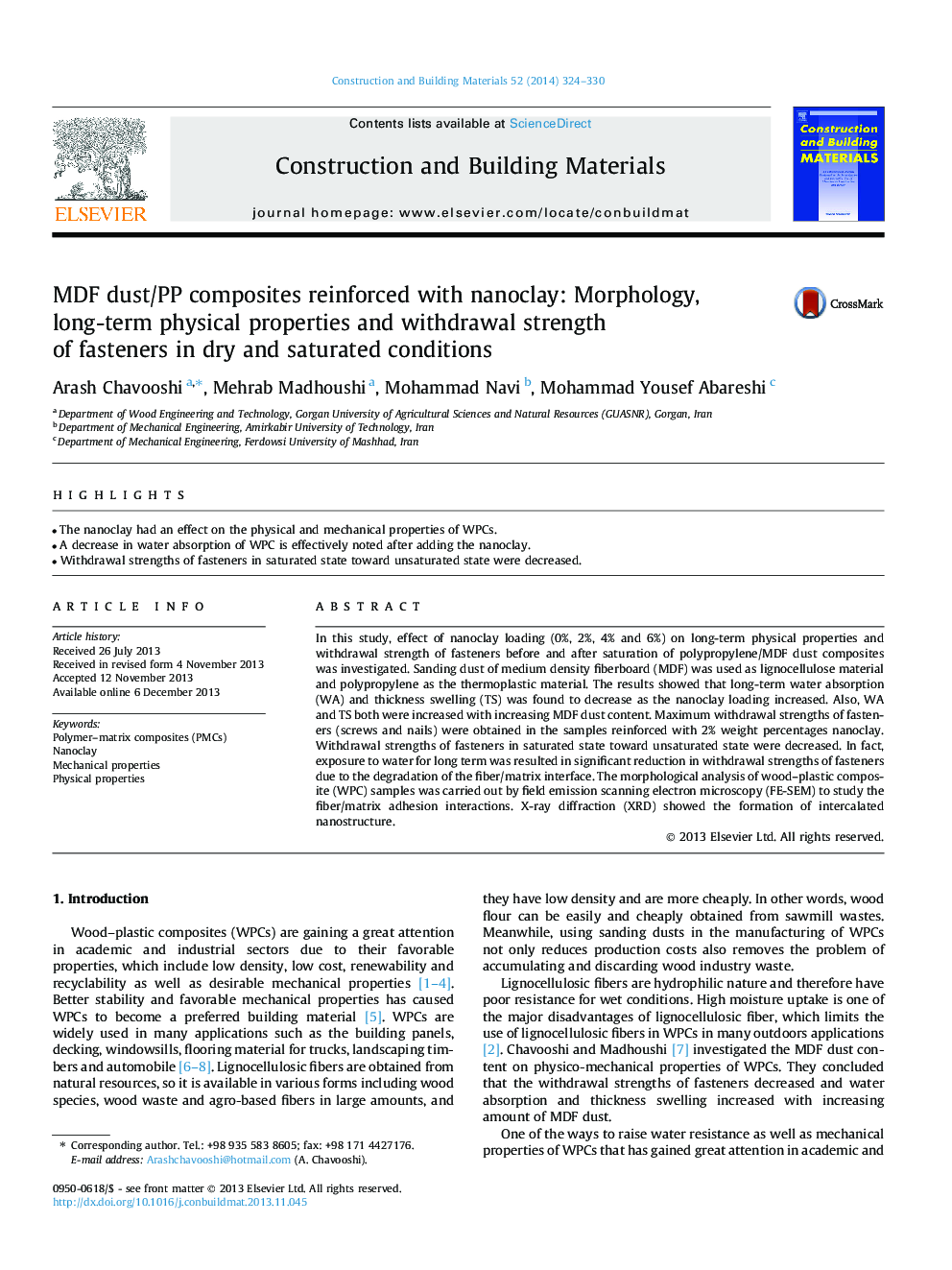| Article ID | Journal | Published Year | Pages | File Type |
|---|---|---|---|---|
| 6724460 | Construction and Building Materials | 2014 | 7 Pages |
Abstract
In this study, effect of nanoclay loading (0%, 2%, 4% and 6%) on long-term physical properties and withdrawal strength of fasteners before and after saturation of polypropylene/MDF dust composites was investigated. Sanding dust of medium density fiberboard (MDF) was used as lignocellulose material and polypropylene as the thermoplastic material. The results showed that long-term water absorption (WA) and thickness swelling (TS) was found to decrease as the nanoclay loading increased. Also, WA and TS both were increased with increasing MDF dust content. Maximum withdrawal strengths of fasteners (screws and nails) were obtained in the samples reinforced with 2% weight percentages nanoclay. Withdrawal strengths of fasteners in saturated state toward unsaturated state were decreased. In fact, exposure to water for long term was resulted in significant reduction in withdrawal strengths of fasteners due to the degradation of the fiber/matrix interface. The morphological analysis of wood-plastic composite (WPC) samples was carried out by field emission scanning electron microscopy (FE-SEM) to study the fiber/matrix adhesion interactions. X-ray diffraction (XRD) showed the formation of intercalated nanostructure.
Related Topics
Physical Sciences and Engineering
Engineering
Civil and Structural Engineering
Authors
Arash Chavooshi, Mehrab Madhoushi, Mohammad Navi, Mohammad Yousef Abareshi,
